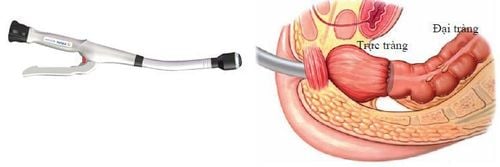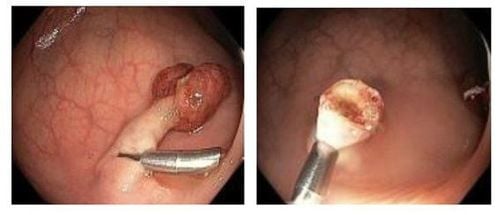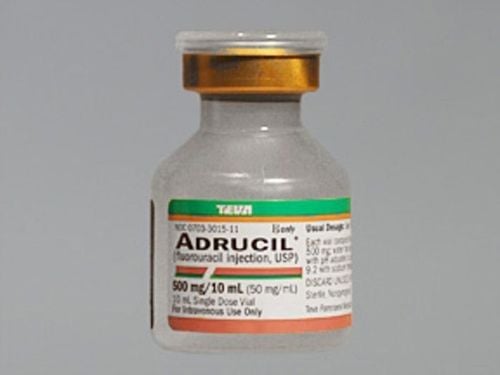This is an automatically translated article.
Right laparoscopic colectomy means removal of the ascending colon and 1/3 of the transverse colon. Right colectomy is intended to treat benign as well as malignant diseases of the colon. However, after surgery, there may be some unwanted side effects.
1. What is laparoscopic right colectomy?
The colon is a part of the large intestine, located at the end of the digestive tract connecting with the small intestine. According to the anatomical structure, the colon is divided into 3 parts according to the direction and arrangement:The right side includes: the cecum, the ascending colon leads to the transverse colon. The left side includes: The descending colon enters the sigmoid colon (pelvis). Rectum: The part of the sigmoid colon that connects to the end of the digestive tract. Right colectomy means removal of the ascending colon and one-third of the transverse colon. Right colectomy is intended to treat benign tumors of the right colon as well as malignant tumors of the right colon.

Cắt đại tràng phải được thực hiện để điều trị khi có khối u
2. Laparoscopic right colectomy
2.1. Indications and contraindications Indications for laparoscopic right colectomy when: Surgery for tumors in the colon from the ileocecal valve to the transverse colon; in some other cases such as ileocecal tuberculosis, cancerous polyps, complicated diverticular disease, necrotic intussusception, mesenteric tumor, colonic Crohn's disease. Contraindicated laparoscopic right colectomy when: Tumor is too large, colon cancer has metastasized to viscera such as duodenum, peritoneum that cannot be removed; The elderly and frail patients or those with severe co-morbidities cannot perform this method.

Chống chỉ định phẫu thuật với người già yếu không đủ sức khỏe
2.2. Steps for laparoscopic right colectomy Step 1: Bladder catheterization and endotracheal anesthesia for the patient. Step 2: Place the trocar at the following positions: Below the navel, above the navel, right iliac fossa, left iliac fossa. Step 3: Assess the injury and the viscera in the abdomen. Step 4: Release the right colon: Dissection method from outside to inside: Dissection of transverse colon, hepatic flexure; dissection of the right Told fascia; dissection to release the ileocecal angle; mesenteric cut. Method of dissection from the inside out: Dissection of the right colon vessels; release of transverse colon, hepatic flexure, Told fascia, ileocecal angle: same as described above. Step 5: Open the abdomen, locate the transverse colon to cut and remove all the tumor. Resection of the right colon, ileum, suturing the mesentery, making an ileostomy - terminal - lateral or lateral. Step 6: Place drainage of the right colonic sulcus, pass through trocar hole number 3 in the right iliac fossa. Step 7: Close the abdominal wall.

Phẫu thuật nội soi cắt đại tràng phải
3. Possible complications during laparoscopic right colectomy
Some complications during laparoscopic right colectomy such as:
In case the tumor is large and unable to perform laparoscopic surgery, it is necessary to immediately switch to open surgery. There may be complications of duodenal perforation, right ureterectomy. Bleeding that is difficult to control must be converted to open surgery. After surgery, there may be a rupture of the anastomosis and must be re-operated. After surgery, intestinal obstruction may occur; intra-abdominal bleeding and residual intra-abdominal abscess. Vinmec International General Hospital with a system of modern facilities, medical equipment and a team of experts and doctors with many years of experience in neurological examination and treatment, patients can completely rest in peace. examination and treatment center at the Hospital.
To register for examination and treatment at Vinmec International General Hospital, you can contact Vinmec Health System nationwide, or register online HERE.
SEE MORE
Laparoscopic procedure for right extension colectomy with lymph node dissection Advantages of gastroscopy and colonoscopy with anesthesia Laparoscopic right and left colectomy in the treatment of rectal cancer













